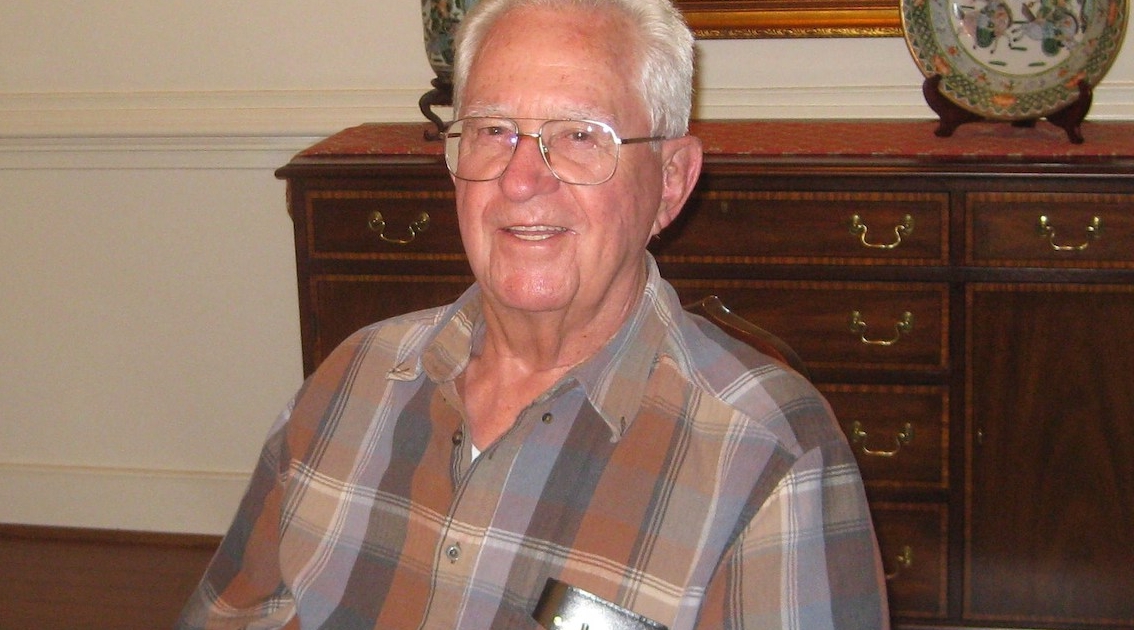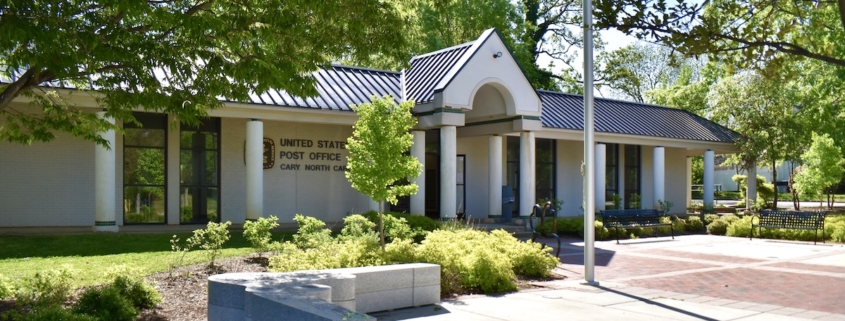Cary History: Post Offices of Cary’s Past
Cary, NC — The Cary post offices on Wrenn Drive and Academy Street are the product of more than 150 years of history. It all began in a time before zip codes and house delivered mail.
Here is a brief history of Cary’s post offices, taken from the book, Around and About Cary by Tom Byrd.
Cary’s Post Office Timeline by Tom Byrd
“March 25, 1856 was the first time “Cary” was used as a local name when the Cary post office was established in Frank Page’s store. Frank was the first postmaster. The North Carolina Railroad had just won a contract to carry mail in 1855. While Frank liked the name ‘Cary,’ other names for this post office included Page, Page’s, Page’s Station, Page’s Junction, Page’s Depot, and Page’s Siding.
In 1894, A.B. Yates rented part of his newly constructed building to the post office. In 1908, a big fire destroyed one of Frank Page’s buildings called “the tobacco factory” which, by that time, housed the post office, among other businesses. Between 1934 and 1964, the post office existed within Pat Gray’s general store in the 100 block of West Chatham Street.
In 1958, with a population of 2,500, Cary became eligible for home mail delivery which would require a larger post office.
In 1965, it was moved into the new federal building at 201 South Academy Street. By 1982, that building was too small, so the post office was once again moved into a former furniture store in Chatham Square. In 1988, the federal building was renovated for the post office’s Academy Street station. In 1990, a new $2 million post office building was built and opened on Wrenn Drive, providing a second location for the town.”
Cary Residents Share Post Office Memories
Margaret Travis
“In Green Level in the 1920s, the mail was brought with horse and buggy to the mailboxes. Later on, the mailman had a T-model Ford.”
Clyde Evans Jr.
“The mail was picked up off the train with a stick as the train went by.”
Doris Denning
“Our postmaster knew everyone. It was just a real small post office at that time.”
Ruth Fox
“No house-to-house mail was delivered. We rented a box at the post office. Our box number was 174. And no zip codes then.”
 Robert Heater
Robert Heater
“Pat Gray was the postmaster, and you went to the window and asked for your mail. It was a big thing when they put some mailboxes in and you could get a mailbox. Our post office box was 34. (Our telephone number was 64.) This was before and after World War II. I think the postmaster had to pay to put those boxes in himself.”
Mary Belle Phillips
“The post office was just a small building, not any bigger than my kitchen. You had to go to the post office to get your mail. They had boxes, but people just went up to the window and asked for their mail. There weren’t many people to deal with. It was a long time before they started delivering mail.”
Esther Ivey
“Our post office enlarged and they had routes. My father delivered the mail on the first route. At that time, he rode a buggy to deliver the mail.”
Story and photos courtesy of Peggy Van Scoyoc. Featured image by Ashley Kairis.
Much of the Cary’s History column is taken from the book, Just a Horse-Stopping Place, an Oral History of Cary, North Carolina, published in August, 2006. The book is a collection of oral history interviews conducted between local citizens and Friends of the Page-Walker Hotel. The rest comes from later oral history interviews with local citizens.





This may come across as cynical given the thoughtful, somewhat wistful nature of this article, but I can’t help but wonder if/when the Academy Street post office will close. It’s only a little over a mile from the Wrenn Street facility, but much smaller. With little or no capacity to use as a sorting facility or as a base for delivery options – well, these are the sorts of redundancies that it seems like USPS is trying to reduce.
At that point I expect it would be either renovated and converted for some sort of retail use like a restaurant, or torn down and redeveloped. It’s kind of a plain building, but it does have a decent presence on Academy with a good setback (for something like a patio or outdoor seating area), and rather a lot of parking, so I would say there is a better than even chance that it would see an interim period (10-15 years) of renovation/reuse before it gets torn down and replaced.
Thanks Peggy for yet another amazing snippet of Cary’s history!